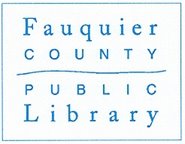
Rising tide : the great Mississippi flood of 1927 and how it changed America by John M. Barry
An American epic of science, politics, race, honor, high society, and the Mississippi River, Rising Tide tells the riveting and nearly forgotten story of the greatest natural disaster this country has ever known -- the Mississippi flood of 1927. The river inundated the homes of nearly one million people, helped elect Huey Long governor and made Herbert Hoover president, drove hundreds of thousands of blacks north, and transformed American society and politics forever. A New York Times Notable Book of the Year, winner of the Southern Book Critics Circle Award and the Lillian Smith Award.
The Johnstown Flood by David McCullough
At the end of the last century, Johnstown, Pennsylvania, was a booming coal-and-steel town filled with hard-working families striving for a piece of the nation's burgeoning industrial prosperity. In the mountains above Johnstown, an old earth dam had been hastily rebuilt to create a lake for an exclusive summer resort patronized by the tycoons of that same industrial prosperity: among them Andrew Carnegie, Henry Clay Frick, and Andrew Mellon. Despite repeated warnings of possible danger, nothing was done about the dam. Then came May 31, 1889, when the dam burst, sending a wall of water thundering down the mountain, smashing through Johnstown, and killing more than 2,000 townspeople. It was a tragedy that became a national scandal. From research in the voluminous records, diaries, letters, interviews with numbers of survivors, and a rare, previously unknown transcript of a private investigation conducted by the Pennsylvania Railroad, David McCullough vividly re-creates the chain of events that led to the catastrophe, and then unfolds the incredible story of the flood itself and its aftermath. Graced by David McCullough's remarkable gift for writing richly textured, sympathetic social history, The Johnstown Flood is an absorbing, classic portrait of life in 19th-century America, of overweening confidence, energy, and tragedy. It also offers a powerful historical lesson for our century and all times: the danger of assuming that because people are in positions of responsibility they are necessarily behaving responsibly.
In sunlight, in a beautiful garden by Kathleen Cambor
A love story set in Johnstown, Pennsylvania, before and after the 1889 dam disaster that took more than two thousand lives chronicles the greed and abuse of power in post-Civil War America.
Julie by Catherine Marshall
Her last novel was inspired by research on the Johnstown flood,and is partly based on autobiographical experiences of the author. A struggling, small-town newspaper, and steel-mill strikes also play important roles in the drama.
Isaac's storm : a man, a time, and the deadliest hurricane in history by Erik Larsen
Meticulously researched and vividly written, Isaac's Storm is based on Isaac Cline's own letters, telegrams, and reports, the testimony of scores of survivors, and our latest understanding of the hows and whys of great storms. Ultimately, however, it is the story of what can happen when human arrogance meets nature's last great uncontrollable force. As such, Isaac's Storm carries a warning for our time.
At the dawn of the twentieth century, a great confidence suffused America. Isaac Cline was one of the era's new men, a scientist who believed he knew all there was to know about the motion of clouds and the behavior of storms. The idea that a hurricane could damage the city of Galveston, Texas, where he was based, was to him preposterous, "an absurd delusion." It was 1900, a year when America felt bigger and stronger than ever before. Nothing in nature could hobble the gleaming city of Galveston, then a magical place that seemed destined to become the New York of the Gulf.
That August, a strange, prolonged heat wave gripped the nation and killed scores of people in New York and Chicago. Odd things seemed to happen everywhere: A plague of crickets engulfed Waco. The Bering Glacier began to shrink. Rain fell on Galveston with greater intensity than anyone could remember. Far away, in Africa, immense thunderstorms blossomed over the city of Dakar, and great currents of wind converged. A wave of atmospheric turbulence slipped from the coast of western Africa. Most such waves faded quickly. This one did not.
In Galveston, reassured by Cline's belief that no hurricane could seriously damage the city, there was celebration. Children played in the rising water. Hundreds of people gathered at the beach to marvel at the fantastically tall waves and gorgeous pink sky, until the surf began ripping the city's beloved beachfront apart. Within the next few hours Galveston would endure a hurricane that to this day remains the nation's deadliest natural disaster. In Galveston alone at least 6,000 people, possibly as many as 10,000, would lose their lives, a number far greater than the combined death toll of the Johnstown Flood and 1906 San Francisco Earthquake.
And Isaac Cline would experience his own unbearable loss.
Living on flood plains and wetlands : a homeowner's high water handbook by Maureen Gilmer
Offers some practical advice for homeowners.
Monday, June 23, 2008
Floods of the Past
Labels:
fiction,
floods,
non-fiction
